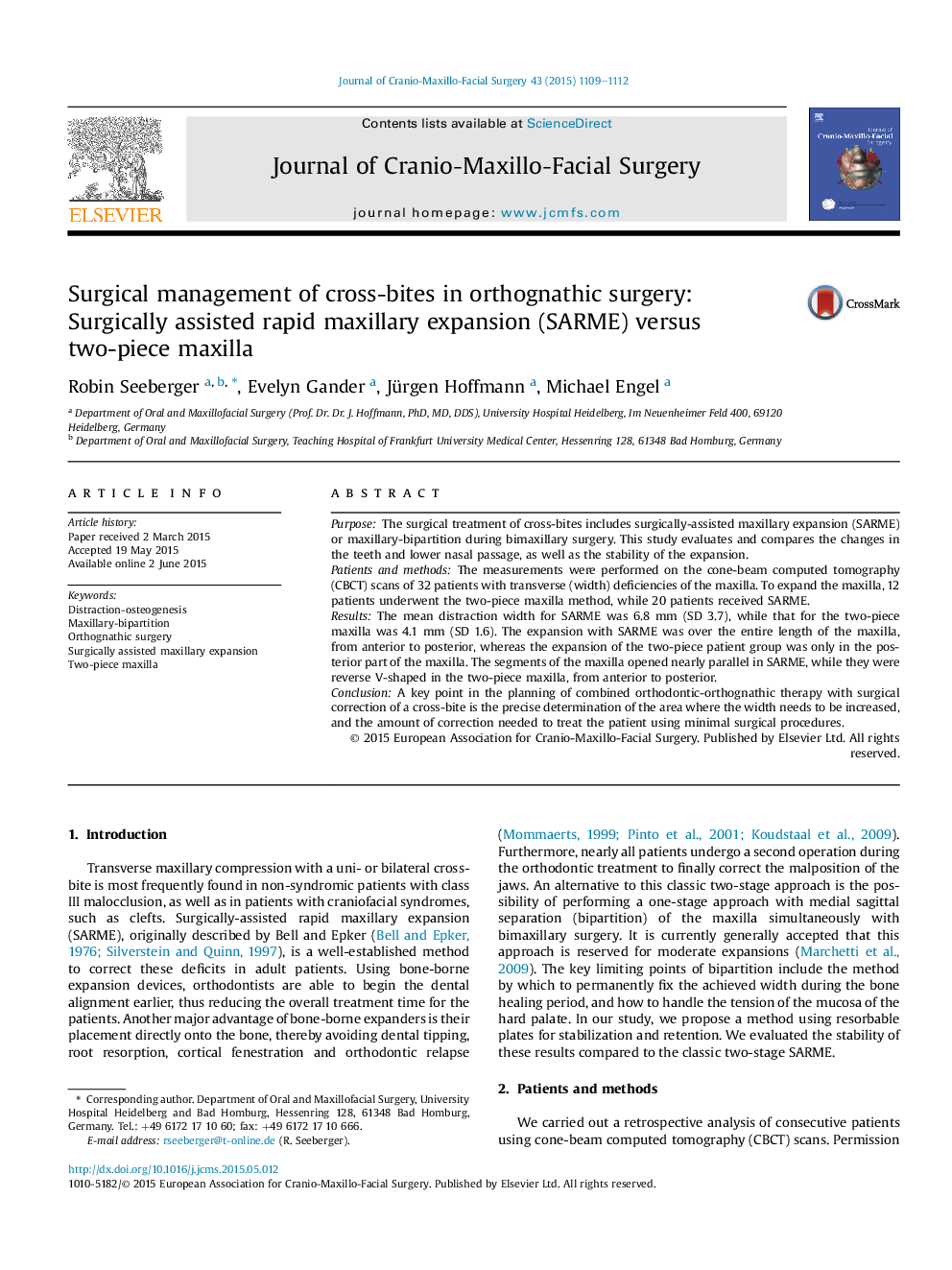| Article ID | Journal | Published Year | Pages | File Type |
|---|---|---|---|---|
| 3142350 | Journal of Cranio-Maxillofacial Surgery | 2015 | 4 Pages |
PurposeThe surgical treatment of cross-bites includes surgically-assisted maxillary expansion (SARME) or maxillary-bipartition during bimaxillary surgery. This study evaluates and compares the changes in the teeth and lower nasal passage, as well as the stability of the expansion.Patients and methodsThe measurements were performed on the cone-beam computed tomography (CBCT) scans of 32 patients with transverse (width) deficiencies of the maxilla. To expand the maxilla, 12 patients underwent the two-piece maxilla method, while 20 patients received SARME.ResultsThe mean distraction width for SARME was 6.8 mm (SD 3.7), while that for the two-piece maxilla was 4.1 mm (SD 1.6). The expansion with SARME was over the entire length of the maxilla, from anterior to posterior, whereas the expansion of the two-piece patient group was only in the posterior part of the maxilla. The segments of the maxilla opened nearly parallel in SARME, while they were reverse V-shaped in the two-piece maxilla, from anterior to posterior.ConclusionA key point in the planning of combined orthodontic-orthognathic therapy with surgical correction of a cross-bite is the precise determination of the area where the width needs to be increased, and the amount of correction needed to treat the patient using minimal surgical procedures.
